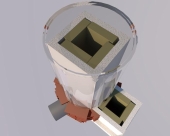





Works at a residential alternative high school in the Himalayas SECMOL.org . "Back home" is Cape Cod, E Coast USA.
 1
1




"You must be the change you want to see in the world." "First they ignore you, then they laugh at you, then they fight you, then you win." --Mahatma Gandhi
"Preach the Gospel always, and if necessary, use words." --Francis of Assisi.
"Family farms work when the whole family works the farm." -- Adam Klaus
 1
1




regards, Peter
 1
1









Projects, plans, resources - now on the Permies.com digital marketplace.
Try the Everything Combo as a reference guide.
 1
1




Projects, plans, resources - now on the Permies.com digital marketplace.
Try the Everything Combo as a reference guide.

|
He is really smart. And a dolphin. It makes sense his invention would bring in thousands of fish.
The new purple deck of permaculture playing cards
https://www.kickstarter.com/projects/paulwheaton/garden-cards
|




